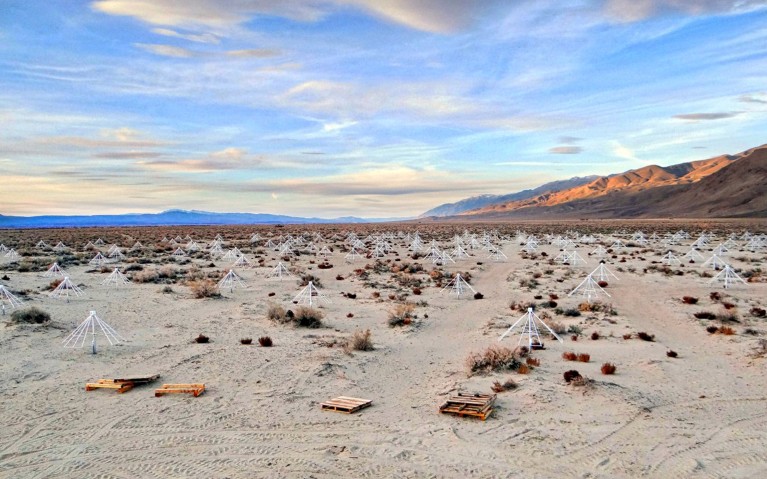- NEWS
- Correction 02 May 2018
Physicists in Earth’s remotest corners race to reproduce ‘cosmic dawn’ signal

The Owens Valley Radio Observatory in California hosts the LEDA experiment, one ofmany trying to probe the first few hundred million years of cosmic history. Credit: Danny C. Price
Access options
Access Nature and 54 other Nature Portfolio journals
Get Nature+, our best-value online-access subscription
$29.99 / 30 days
cancel any time
Subscribe to this journal
Receive 51 print issues and online access
$199.00 per year
only $3.90 per issue
Rent or buy this article
Prices vary by article type
from$1.95
to$39.95
Prices may be subject to local taxes which are calculated during checkout
Nature 557, 15-16 (2018)
doi: https://doi.org/10.1038/d41586-018-04966-9
Updates & Corrections
-
Correction 02 May 2018: An earlier version of the caption for the first image implied that the picture is of the LEDA experiment. In fact, it is the Owens Valley Long Wavelength Array, which hosts the experiment.
References
Bowman, J. D., Rogers, A. E. E., Monsalve, R. A., Mozdzen, T. J. & Mahesh, N. Nature 555, 67–70 (2018).
Barkana, R. Nature 555, 71–74 (2018).
McGaugh, S. Preprint at https://arxiv.org/abs/1803.02365 (2018).

 Astronomers claim first glimpse of primordial stars
Astronomers claim first glimpse of primordial stars
 Cosmic map reveals a not-so-lumpy Universe
Cosmic map reveals a not-so-lumpy Universe
 Astronomers detect light from the Universe’s first stars
Astronomers detect light from the Universe’s first stars







